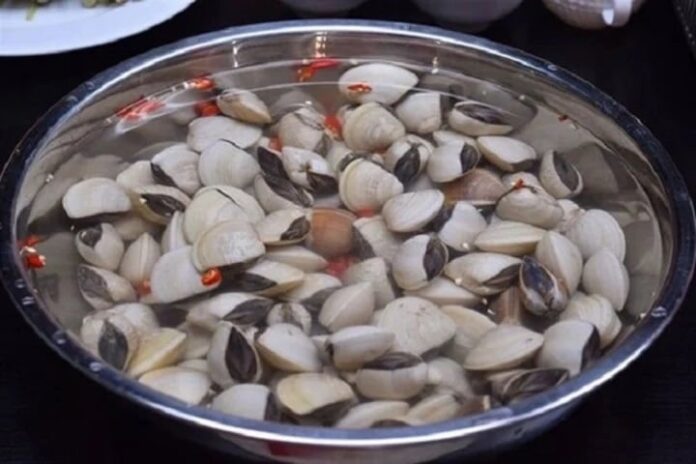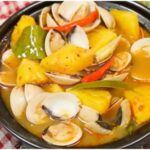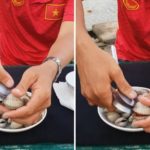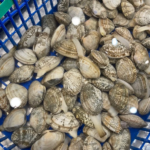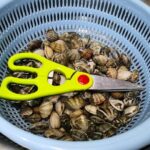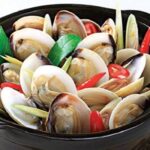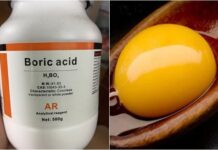## Choosing Fresh Clams
When buying clams, choose intact, large, round, and plump ones that feel heavy for their size. Avoid any with cracked or broken shells, those that feel light, or emit a foul odor, as they are likely to be of poor quality, old, or dead and mixed in with the live clams.

Soaking clams in warm diluted saltwater will cause them to breathe and expel sand after about 30 minutes.
One important thing to note is that clams that have opened their shells may already be dead or of poor quality. To ensure you get live clams, pick those with hard shells that are tightly closed. Try prying the shells apart with your fingers; if they quickly clamp shut, they are alive and healthy, but if they don’t react, they are likely dead or very weak.
## Tip for Cleaning Sand
Clams live in a saltwater environment with a salinity of about 5%. Therefore, soaking them in freshwater will not be effective in getting them to spit out the sand, and they will likely clamp shut and die faster.
To clean the sand from the clams, mix 1-2 tablespoons of salt into the water and stir until dissolved before adding the clams. The familiar salty taste will stimulate the clams to open their shells and expel the sand. Soak the clams for about 2-3 hours to ensure they release all the sand.
If you want to reduce the cleaning time to just 1 hour, add a few drops of cooking oil to the water. Since oil is lighter than water, it will float to the top, creating a barrier that prevents air from reaching the water. In this low-oxygen environment, the clams will open their shells and expel the sand more quickly.

Add a few slices of chili to enhance the effectiveness of the cleaning process.
After an hour, place the clams in a container and shake vigorously to “stun” them, then soak them again. Soon after, the clams will open their shells and release any remaining sand.
Note that the water temperature for soaking should be warm, around 50°C (any hotter, and the clams may die). When they sense the increased heat, the clams will naturally protect themselves by absorbing more water and expelling sand.
Rice washing water can also help remove sand from the clams. Soak the clams in this water for 1-2 hours.
The Ultimate Guide to Shucking Blood Cockles: A Speedy and Stress-Free Approach
Introducing the ultimate hack to speed up blood cockle shelling! With this nifty little trick up your sleeve, you’ll be done in a flash. Stay tuned as we reveal the secret to mastering the art of swift and tidy blood cockle shelling. This game-changing technique will revolutionize the way you prepare these delicious mollusks.

























